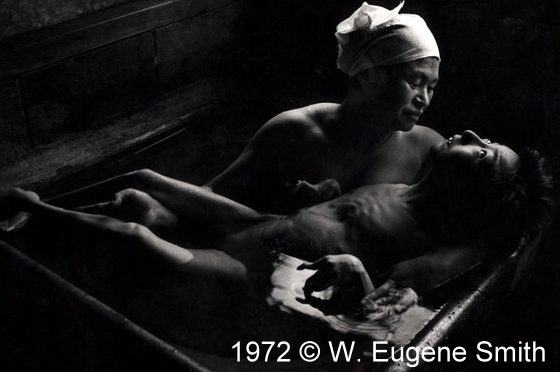it kills
THE ELICIT TRADE IN MERCURY

by
DAVID GONZALEZ
__________________________________________________________
Palo
Alto Highway 120 bisects the Sierra Gorda Biosphere Reserve, snaking
through the scrubby terrain of central Mexico’s highlands.
Along the way it passes through Peñamiller, a sparse municipality
with a few thousand residents. The local economy depends on production
from agriculture and mines. A dusty offshoot from the highway
leads to one such mine – a cinnabar mine, with tunnels plunging
hundreds of meters into the mountainside. Miners process ore in
rows of wood-fired brick ovens arranged near the mouths of the
tunnels. The homebuilt ovens heat the rocky material, releasing
mercury vapors that are captured, condensed, and bottled. Under
a cloudless sky, with few trees for shade, the workers wear t-shirts
and cover their mouths with bandanas, their only protective equipment.
However, the cloth does not protect from mercury vapors, which
enter the body through the lungs and cause irreparable damage
to the brain and kidneys. Children live in nearby houses and sometimes
play in the tailings, breathing in the mercury. This is a toxic
site.
Evidence
points to an emerging black market for mercury in South America,
where most of Mexico’s mercury ends up. Artisanal miners
in Peru, Colombia and Bolivia buy mercury and use it to extract
gold under similarly hazardous conditions. Artisanal and small-scale
gold mining, done by individuals or small groups with limited
capital, is the largest human source of mercury pollution, accounting
for over one-third of global emissions. It is also a large driver
of global mercury demand. The changing landscape of mercury production
 and
trade in Latin America, and the associated hazards, may be an
unintended consequence of the global effort to regulate the toxic
metal.
and
trade in Latin America, and the associated hazards, may be an
unintended consequence of the global effort to regulate the toxic
metal.
The Minamata
Convention on Mercury, a UN a treaty that aims to reduce global
mercury pollution, was adopted and opened for signatures in 2013.
The convention prohibits the opening of new mercury mines, requires
existing mines to close within 15 years, and encourages nations
to reduce or eliminate mercury use in artisanal gold mining. However,
demand persists and millions of miners in low- and middle-income
countries in Latin America and elsewhere continue to use mercury.
Peru
is the largest gold producer in Latin America, with a highly active
artisanal gold mining sector concentrated in the Amazonian region
of Madre de Dios. A recent study found that the rate of expansion
of gold mines in Madre de Dios increased from 2013 to 2016, following
a wave of government action that had reduced mining activity.
By 2016, more than 650 square kilometers of rainforest had been
cleared for gold mining, an area larger than the city of Chicago
and an increase of 40 percent since 2012. There is also evidence
of widespread human mercury exposure in Madre de Dios. Last year,
Duke University researchers reported high mercury levels in communities
throughout the region.
There
is a long history of global mercury trade for mining precious
metals, with a recent shift to production from high- to middle-income
countries. In 2003, the world’s largest mercury mine in
Almaden, Spain, shut down after two millennia of service. Over
the course of its long life, Almaden produced one-third of all
mercury used throughout human history, from the cinnabar that
Romans applied as red pigment to liquid mercury used to make century
industrial chemicals. Sometime in the 16th century, Spanish colonizers
began bringing mercury from Almaden to the Americas, where it
was used to enhance yields of the silver and gold that fueled
the imperial economy. Eventually, mercury lost its value as safer
alternatives were found for its many applications, including mining
precious metals. The price of mercury dropped from a high of $80,000
per ton in the 1960s to $5,000 in 2000. By the turn of the 21st
century, mercury extraction at Almaden was no longer profitable.
Mercury exports from Spain continued for another 10 years. At
the start of this decade, Spain and the United States were leading
mercury exporters. However, the European Union banned mercury
exports in 2011, followed by the United States in 2013. To meet
demand, Indonesia and Mexico increased exports and became the
leading exporters in 2016.
Recent
trends in international mercury trade point to changes on the
ground. Peru tightly regulates domestically-produced mercury,
prohibiting its use in mining, but imported mercury can be used
for mining. Peru imported at least 100 tons of mercury each year
from 2010 to 2014. About half of Peru’s mercury imports
ended up in Madre de Dios, where artisanal gold miners use an
estimated 44 to 50 tons of mercury each year. Peru stopped importing
mercury in 2015. However, despite the suspension of mercury imports,
there are no indications that artisanal miners have stopped using
mercury.
Mercury
may be passing from Mexico to Peru by way of Bolivia through an
emerging black market. Mexico became the leading mercury supplier
to Peru in 2012 as imports from Europe and North America decreased.
Mexico remained the leading supplier until Peru stopped importing
mercury in 2015. However, as exports from Mexico to Peru decreased,
exports from Mexico to Bolivia rose. Between 2014 and 2015, exports
from Mexico to Peru dropped from 94 to 9 tons. In the same period,
exports from Mexico to Bolivia jumped from 24 to 138 tons. Artisanal
gold mining activity in Bolivia has increased during the past
decade, but a six-fold increase in one year is unlikely. There
is also evidence of transnational mercury smuggling. In August
2015, for example, Peruvian authorities seized an illegal shipment
of more than 1 ton of mercury near the Bolivian border.
Continuing
demand for mercury and the suspension of exports from high-income
countries is driving unsafe mining in Mexico with consequences
for human health. Mexican mercury exports increased from 25 to
266 tons between 2010 and 2016. There is little data on the health
effects of mercury mining in Mexico, but the studies that exist
raise concerns. Researchers found heavy mercury exposure among
residents of Plazuela, another mining community in the Sierra
Gorda Biosphere Reserve. Children as young as 6 years old had
mercury exposure above the national limit. Unfortunately, the
results from Plazuela are likely not isolated, and Mexico has
numerous artisanal mercury mines.
The apparent
rise of a black market for mercury in Peru reveals a challenge
for enforcing the Minamata Convention. The Minamata Convention
provides a blueprint to reduce mercury pollution in the coming
years. In the meantime, the mercury supply chain in Latin America
remains toxic, from end to end.
Reprinted
with permission Copyright © 2017 YaleGlobal and the MacMillan
Center